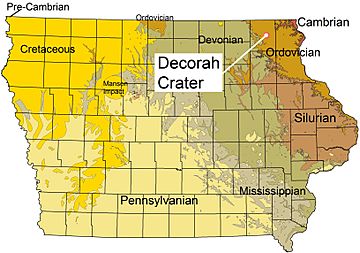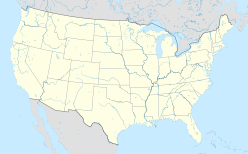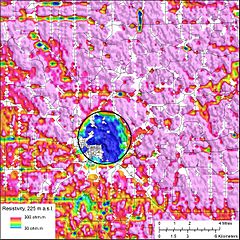Decorah crater facts for kids

Location of Decorah crater on bedrock map of Iowa
|
|
| Impact crater/structure | |
|---|---|
| Confidence | Potential |
| Diameter | 3.5 mi (5.6 km) |
| Age | ~470 Ma Middle Ordovician |
| Exposed | No |
| Drilled | No |
| Bolide type | Ordovician meteor event? |
| Location | |
| Coordinates | 43°18′50″N 91°46′20″W / 43.31389°N 91.77222°W |
| Country | United States |
| State | Iowa |
| District | Winneshiek |
| Municipality | Decorah |
The Decorah crater, also known as the Decorah impact structure, is a possible impact crater in Decorah, Iowa, United States. Scientists think it was made by a meteor about 200 metres (660 ft) wide. This huge space rock hit Earth around 470 million years ago. This was during a time called the Middle Ordovician Period.
Discovering the Hidden Crater
The Decorah crater is about 3.5 miles (5.6 km) wide. But you can't see it on the surface! It is completely covered by a type of rock called the Winneshiek Shale. This rock layer is more than 50 feet (15 m) below the Upper Iowa River.
The meteor impact was incredibly powerful. It was like a giant explosion. Even though it didn't break through Earth's deep layers, it pushed down the older rocks beneath it by hundreds of feet.
Scientists believe the Decorah crater might be part of a bigger event. Around 469 million years ago, several meteors might have hit Earth at almost the same time. This is called the Ordovician meteor event. Other craters from this event include the Rock Elm crater in Wisconsin, the Slate Islands crater in Lake Superior, and the Ames crater in Oklahoma.
Ancient Sea Scorpions!
The rocks that filled the Decorah crater are very special. They are called Lagerstätte sediments. These sediments have preserved many unusual ancient creatures.
One amazing discovery was a new type of eurypterid. This creature is also known as a "sea scorpion." Its scientific name is Pentecopterus decorahensis.
Pentecopterus looked a lot like a modern scorpion. It was the largest predator known from that ancient time. It could grow to be almost 6 feet long! Its species name, decorahensis, comes from the city of Decorah, where the crater is found.




